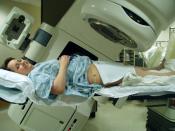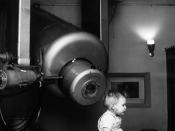Ever since the discovery of radiotherapy back in 1895, it has been debated whether it is completely safe, and whether it is worth all the risks. Really, the question all these years has been whether the chance of getting cured from cancer is worthy enough to risk the dangers, risks, and drawbacks of radiotherapy. It is this dilemma which will be looked at, in order to tell you whether radiotherapy is worth it, or too risky.
Radiotherapy dates all the way back to the initial discovery of X-rays which was by someone named Rontgen, and of the discovery of substances like uranium by Becquerel, in 1895 and 1896 respectively. These then eventually led to the discovery of radium by Marie and Pierre Curie in 1898.
The first time radiotherapy was used to try and cure breast cancer was within a few months of its discovery, in the United States of America. More tests followed soon in Germany, Austria, and France. However, the loss of hair from the patients quickly alerted the medical community to potential harmful side effects. The first report of successful treatment by X-ray was of a skin cancer in 1899. After Becquerel had been burned by a test tube containing radium, experimenting started using radium, and in 1903 the first successful treatment of skin cancer using radium was recorded. Even though there were early signs of danger, the proper protection of employees was not taken seriously until the 1930ÃÂs, and not done properly until even later then that. It was so serious, that in 1920 it was still recommended for a doctor to check by the redness of his own skin to dose the appropriate amount of radium.
In 1941, pluntionium-239 was discovered. From this point on it was possible to use man-made isotopes for radiotherapy.


